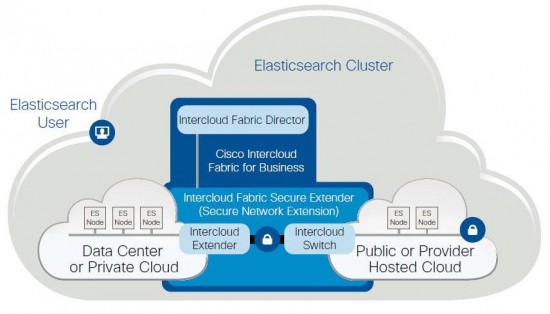So you thought that cloud was the fad of the day. But it stuck. Now you hear all the fuss about hybrid cloud. Even the die-hard cloud fanatics who believed that the only cloud had to be in the public cloud, have conceded that folks need hybrid cloud – a seamless application environment across on-premise and off-premise infrastructure that can provide best of both worlds – speed, scale and economics of public cloud with control, security and data sovereignty of private cloud. Hybrid cloud allows this perfect balance and you don’t have to worry about walking on a fine rope or tripping over IT control or compliance while providing agile IT services.

Sounds great! But what exactly can you do with hybrid cloud? A couple of use cases come to mind:
- Capacity Augmentation: Deploy applications primarily in private infrastructure and leverage public cloud for managed peaks or burst scenarios
- Development & Test: Quickly provision development resources in cloud with access to enterprise tools, templates and data
Still sounds fluffy? Well, here are a few real world applications that our leading customers have been running in hybrid cloud. Our technical teams have generalized and validated them so all of you can enjoy the same benefits easily.
1.) Scaling E-business application with web-tier in cloud
Whether you are a media giant who wants to scale the web tier when clicks go through the roof on meaty news, or a not for profit organization who wants to scale front end for its donation campaign during holiday season, truth is that putting web servers in cloud is easy, but integrating it with enterprise data and services is not. With hybrid, split-tier applications can be deployed. See how to do it in the whitepaper: http://www.cisco.com/c/en/us/products/collateral/cloud-systems-management/intercloud-fabric/whitepaper-c11-734799.html
2.) Big Data search and analysis with distributed data sets in cloud
Big Data calls for big storage and often it is not prudent to keep tons of historical data in your data center. So you can archive it cost effectively in the cloud. However, if you need to run a search or query on data spread across on-premise and cloud, it is simply not possible given silo’d networking and access control models. But, if you build hybrid infrastructure where cloud is a secure extension of data center, your data in the cloud is just at arm’s length and you can run analysis as if everything is at one place. To get this working in your environment, review the solution brief: http://www.cisco.com/c/dam/en/us/products/collateral/cloud-systems-management/intercloud-fabric/dist-sear-hybridcloud.pdf

3.) Consistent development environment in cloud for enterprise applications
Any developer can swipe a credit card to get his own development environment in public cloud, but the challenge is that it looks nothing like your enterprise development environment. You can’t access enterprise tools and data and there are variations in OS and VM characteristics. What if you can have an enterprise-blessed development stack deployed in the cloud with full access to enterprise tools, identity, and templates? Then you can use cloud to scale development and test environments quickly without worrying about workload portability issues down the road. See this and other capacity augmentation use cases in our validated design: http://www.cisco.com/c/en/us/td/docs/solutions/Hybrid_Cloud/IT_Capacity_Augmentation/CapAug.html
All this is made possible by Cisco’s Intercloud Fabric, an infrastructure agnostic software solution to build hybrid clouds. It allows seamless data center extension to cloud with consistent operational model and security. Learn more at: http://www.cisco.com/go/intercloudfabric
Hmm. I’m still not entirely convinced. I work at a software company, though I’m on the business side instead of the tech side. Still, I don’t think we’ve ever had any trouble searching or analyzing our data in the cloud with Kiss Metrics, Google Analytics, etc.
If all your data is in the cloud, sure you can run search or analytics easily. However, if you want to keep your data private in your data center for security or data sovereignty reasons and only selectively use cloud for old or less sensitive data, it is hard to do common search and analytics across a combination of on-premise and cloud based data sets. Hybrid deployments simplify that by making your cloud based data be available in the same network or security zone as your on-premise data.
Thank you for the comprehensive overview